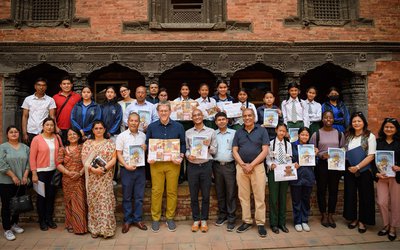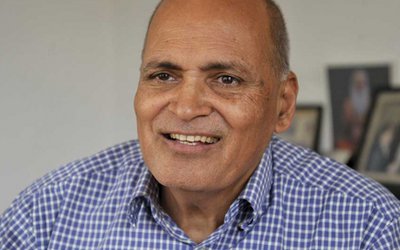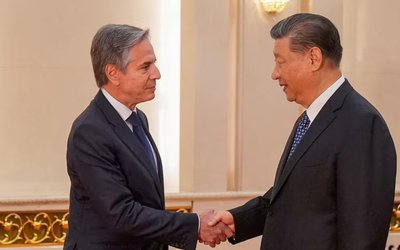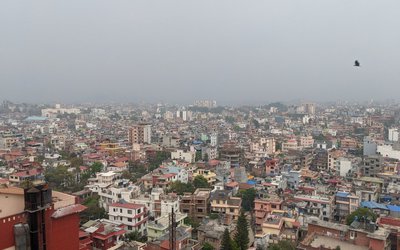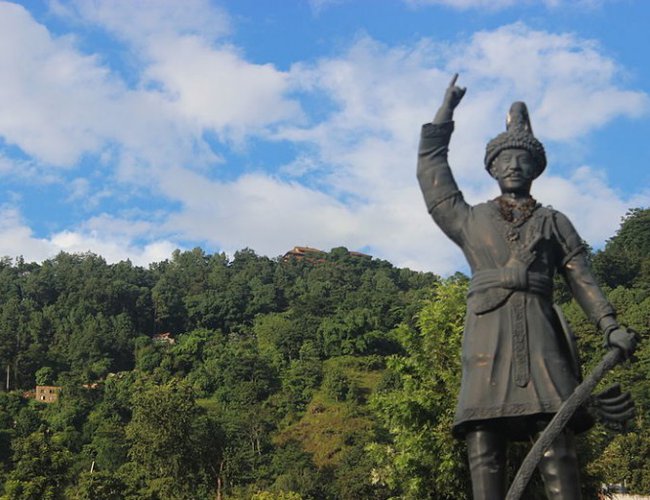
Most of us primarily still active oldies alive today lived in a world of ideological clarity: horrors of World War-2 brought about by its fascist commanders had ended; the victors were divided into US-led Western liberals focusing on individual human rights or the Russian/Chinese communists who put primacy on societal interests over that of the individual; and the only question was who could provide better and faster development. Now that certainty has ended and the old post-WW2 World Order is dead; but a new one is unborn, with even its basic character unknown.
If one looks at the horrors inflicted on Palestinians in Gaza, it is ironically the Collective West that reminds one of WW2’s fascist disregard of innocent human lives while erstwhile communist Russia, China and the non-aligned of the Global South come out as defenders of liberal individual values. Even the very concept of development is under question: is unlimited market-led prosperity for the 1% and penury for the remaining 99% (especially in the US as Bernie Sanders points out) compounded with environmental carnage of land, sea and air what it is all about? And if a more equitable economic order is to be sought, does conventional “democracy” with squabbling parties and elections deliver that better,or does a more “authoritarian” order that focuses on governance as Modi and Yogi down south are demonstrating? For Nepal, with the country in the grip of a kleptocracy (but painted as “democratic”) and its impotent parliament handmaiden to it all,has not the UK Westminster model imported via India failed multiple times and run out of hope with its latest Loktantrick loot? Has not the alternative Chinese model to the north not delivered better in uplifting hundreds of millions out of poverty?
There are difficult questions to answer that lie ahead before any broadly acceptable clarity will emerge; but a beginning needs to be made going much further back to the very origins of capitalism, which is not a universal human thing but an anomaly born around 1500AD at the western end of the Eurasian peninsula. The best place to begin, before one gets lost in Marxist cacophony, is Prof. Stavrianos’s brilliant reframing of global history not as that of countries or its distinguished rulers but as that of the history of the process of Third Worldization with the rise of capitalism.
He argues that it emerged from several unique historical contexts of Western Europe not found elsewhere: lack of a resource-sucking empire after the fall of the Roman order; decentralized manorial, self-sustaining feudal economy; a Christian Protestant reform that glorified labour, forbade enslaving its members andadvocated simple living eschewing ostentatiousness; emergence of a cross-border merchant class more powerful than feudal barons that managed to force the Church to allow interest payment on lent money that earlier was banned as sinful usury; the invention of the joint-stock company which allowed massive capital pooling from small investors for very large profit-making enterprises that even rich individual kings could not risk; and the Black Death bubonic plague that decimated labour, which forced precocious development of labour-saving technologies (and ultimately military ones) that built on earlier scientific renaissance.
This new dynamism of market-led first mercantile and later industrial capitalism triggered fights for both resources for production as well as markets to sell the produced goods. Countries that managed to establish production enterprises that converted raw material into finished products and sold them to consumers elsewhere became the First World. Others that exported raw material and natural resources and ended up buying industrial goods, often on very unfavourable terms of trade, became fatalized colonies of the Third World. Stavrianos argues that the first place to become Third World was Eastern Europe, followed by North America that was so Third Worldized that it disappeared into miserable Native American reservation ghettos. Latin America, Africa, Asia and the Middle East (after the fall of the Ottoman Empire) followed the path into Third Worldization.
Japan was the only country to avoid that fate; and countries like Nepal, Thailand and Afghanistan avoided political colonization but not its economic consequences. Nepal could have perhaps become Japan in this matter if she had faithfully followed its founder Prithvi Narayan Shah’s injunction in Divya Upadesh to rely on products of one’s own industry rather than that brought by import merchants. Sadly, that was not to be with subsequent rulers, including present ones who think exporting a raw material like hydroelectricity that is a critical input to production to a monopsony market will bring prosperity. It will for sure only enhance Nepal’s Third World status!
The fight for resources and markets has seen unending wars, the big ones often talked about being WW1 and WW2; but other military interventions from the 16th century right down to the present are no less significant. The case of the United States, in practically unending wars (against the native dwellers even before its declaration of independence from Britain), is proof if any were needed. One of the most insightful thinkers who demonstrated the inextricably entwined nature of capitalism with militarism to ensure capital accumulation has been Rosa Luxemburg. Again, if any proof were needed, the NATO-Russia war in Ukraine as well as that in Gaza today demonstrate that fundamental reality of the Military-Industrial-Congressional Complex in the current world order that General Eisenhower so presciently warned everyone about.
Indeed, as West African intellectuals such as Samir Amin have described it, post-WW2 European reconstruction via Marshall Plan was predicated on France and Britain giving up their colonies allowing US capital easier entry to those places. Furthermore, in cementing US hegemony over Europe, NATO military alliance was crucial. As its first secretary general Lord Ismay put it, its purpose was “to keep the Americans in, Russians out and the Germans down”. Looking at how the German energy market was snatched away from the Russians and captured by American fracked shale oil and gas with the blowing up of the NordStream2 pipeline, the Germans indeed are being kept down and headed towards deindustrialization.
Today, as the post-WW2 Pax Americana world order is winding down – with American debt crossing 33 trillion dollars, manufacturing exported to China and East Asia, and its finance capital further losing clout with its weaponization via economic sanctions – the world is at the same point it was in just before WW1 with powerful European countries fighting for colonies and resources, and in 1933 with Germany and Italy smarting at the French and the British for having a stranglehold on Third World colonies. The only difference this time is the rise of the non-West – China, Russia, India and rest of the BRICS –who are also entering into the fray for resources and markets. And what they, having more or less broken the manufacturing and military monopoly of the West, bring to the table are civilizational values very different from the Judeo-Christian ones of the Collective West. How that will shape the new world order is yet to be seen.
This is where political ideology enters the picture. What are we fighting for, to build what and with what kind of a vision? The ideological divide of the 1950s to 1990s collapsed with the Berlin Wall; and the fight for social justice against an exploitative market took a back seat. Socialist (i.e. believing in social, environmental and multi-generational justice) countries like China, India and Russia went for capitalist – and as a Luxemburgian corollary, military – power in a manner no different from the Collective West in order to challenge it. But, as Karl Polanyi has so presciently pointed out, his political economy being later than Marx but distinctly more explanatory, the battle continues to be: should societies serve the market or should markets serve society? And how is that to be decided?
This fight is even more acute in under-developed countries like Nepal. Its political class – whether Nepali Kangress’s BP Socialism, or the UML’s Marxism-Leninism, or the Noida Maoist’s Maoism – has jettisoned all such beliefs to serve comprador business interests (dalal punjibad, in Nepali). It is not for nothing that the Chinese, during the 1996-2006 “peoples’ war” period, used to refer the Noida Maoists as “anti-government bandits besmirching the name of Mao!” But, like good capitalist elsewhere, i.e. Americans as per Roosevelt’s dictum of good SoBs being OUR SoBs, they quickly chose to embrace them to further Chinese interests. Long-term Nepali interests will not be furthered without parties having political ideologies that uphold them. Currently, only the RPP has one upholding tradition and its values; but we are yet to see a party that genuinely upholds overall social justice, especially for the country’s disadvantaged and marginalized poor in the face of a rapacious market.

Dipak Gyawali
Gyawali is Pragya (Academician) of the Nepal Academy of Science and Technology (NAST) and former minister of water resources.
- Maldevelopment And Technology: Ethos Harbingering Coming Apocalypse
- Apr 03, 2024
- World Social Forum: Rethinking and Redefining Development Itself
- Feb 21, 2024
- Remembering An Inspiring Karma Yogi
- Jan 09, 2024
- Loktantra’s Moral Turpitude
- Nov 06, 2023
- Will Nepal Leapfrog In Its Mobility?
- Sep 20, 2023






